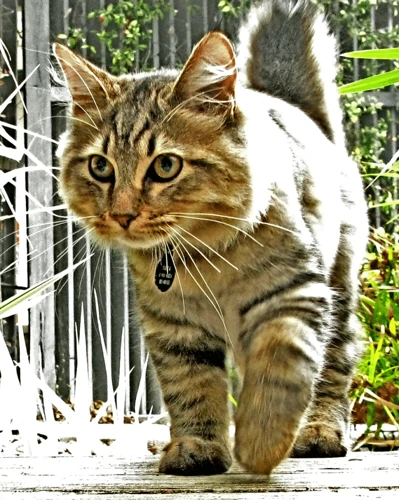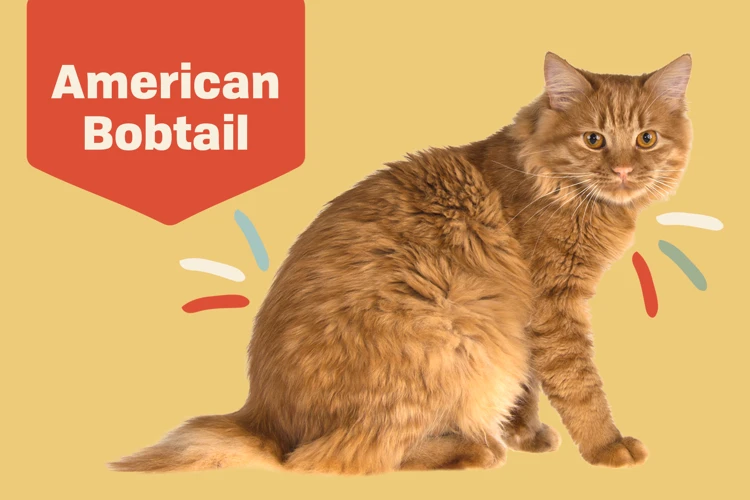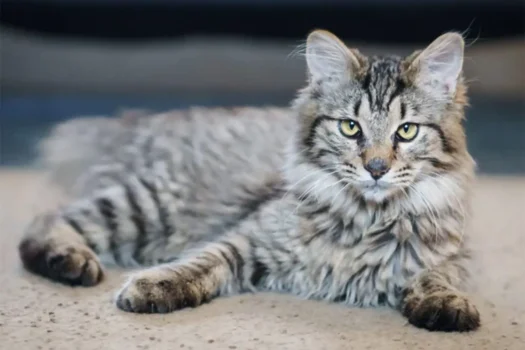As a pet owner, one of the most exciting moments is introducing your furry friend to new people and other pets. However, the process can be daunting and stressful for both your American Bobtail and the newcomers. That’s why it’s essential to prepare and approach these introductions with caution. With proper planning and techniques, these introductions can be successful and stress-free for everyone involved. Let’s dive into the step-by-step guide on how to introduce your American Bobtail to new people and pets.
Preparing for Introductions

Preparing your American Bobtail for introductions can be a nerve-racking experience. It’s normal to want your furry friend to be accepted and loved by everyone, but it’s important to remember that each cat has its own personality and comfort level when it comes to interacting with new people and pets. To make the process as smooth as possible, there are a few key steps to take before jumping into introductions. Let’s explore what you can do to prepare your American Bobtail for socialization success.
To make sure your American Bobtail is well-behaved and confident during introductions, consider taking a look at our benefits of reward training for American Bobtails article.
Schedule Introductions Carefully
One key aspect of introducing your American Bobtail to new people and pets is to schedule these introductions carefully in order to reduce potential stress and ensure success. Timing is important – it’s best to schedule introductions at a time when your cat is most relaxed and comfortable, such as after a meal or play session. Additionally, consider your own schedule and make sure you can give your cat your full attention during these introductions.
Making a schedule is a good idea, as it can help you feel organized and ensure you don’t forget any important details. Consider making a checklist of the introductions you plan to make and what you want to accomplish during each one. This can help ensure you stay on track and don’t accidentally skip a step.
It’s also important to be patient and take your time during introductions. Rushing the process can cause your cat to become anxious, which can lead to behavior problems.
During introductions, read your cat’s body language carefully and respect their boundaries. If your cat seems nervous or unsettled, it’s important to take a step back and give them time to adjust. Some helpful resources to learn about your American Bobtail’s body language are here and here.
Scheduling introductions carefully can help ensure a smooth and successful process. If you are unsure how to proceed or feel overwhelmed, consider reaching out to a professional trainer or behaviorist who can provide guidance and support. Additionally, clicker training or leash training can help increase your American Bobtail’s confidence and reduce stress during introductions.
Create a Safe Space
When preparing to introduce your American Bobtail to new people and pets, one of the most important steps is to create a safe space for your kitty. This will be a comfortable area that your cat can retreat to if they feel overwhelmed or scared during the introduction process. Here are some tips on how to create a safe space for your American Bobtail:
- Choose a Quiet Room: Choose a low-traffic room in your home to serve as your cat’s safe space. A spare bedroom or home office works well.
- Add Comforting Items: Fill the room with familiar items that your cat loves, such as their bed, toys, and scratching post.
- Provide Hiding Spots: American Bobtails love to hide when they’re feeling nervous, so make sure there are places for your cat to snuggle up and hide away, such as a cardboard box or covered bed.
- Set Up Litter Box and Food Bowls: Be sure to set up a litter box and food bowls in the safe room so that your cat has access to what they need.
By creating a safe space for your American Bobtail, you can help them feel comfortable and secure during what can be a stressful time. When introducing your new kitty to your home, remember to take things slow and follow a few simple steps. For example, if you have other pets, you should always supervise their interactions until you are certain that everyone is comfortable with each other. If you need help teaching your new furry friend basic commands, check out our article on American Bobtail basic commands. Finally, make sure your kitty is healthy before introducing them to other pets; if they are still kittens you can read our article on socializing American Bobtail kittens for tips.
Gather Necessary Supplies
In order to ensure a successful introduction for your American Bobtail to new people and pets, it’s important to gather the necessary supplies beforehand. Here are some items that you should consider including in your list:
- Leash and Harness: Having a leash and harness for your American Bobtail will help you keep control over them during introductions, especially if they’re meeting a new pet.
- Treats: Treats are a great way to reward your American Bobtail for good behavior during introductions. Make sure to have some on hand and use them generously.
- Scratching Post: If you’re introducing your American Bobtail to a new home, it’s important to make sure they have a designated scratching post. This will help divert their attention from furniture and prevent damage.
- Toys: Having a few toys on hand can be a great way to distract your American Bobtail during introductions, especially if they’re feeling shy or nervous.
- Cat Carrier: If you’re introducing your American Bobtail to a new home, make sure to have a cat carrier that you can use to transport them safely.
- Clean-up Supplies: Accidents can happen, especially during stressful situations like introductions. Be prepared with some cleaning supplies, like paper towels and odor-neutralizing spray.
- Patience: While not a physical item, patience is an essential supply to have during introductions. It can take time for your American Bobtail to adjust to new people and pets, so take things slow and be prepared for setbacks.
By gathering these necessary supplies beforehand, you’ll be well-equipped to handle any challenges that might arise during introductions, and you’ll help set your American Bobtail up for success in their new surroundings.
Introducing to People

Bringing your American Bobtail to meet new people can be an exciting, yet stressful experience. As social creatures, American Bobtails love to interact and make new friends, but they may also feel anxious in new environments. Following proper protocols is crucial to ensure that the introduction process goes smoothly. In this section, we will delve into the necessary techniques for introducing your furry friend to new people with minimum stress and maximum enjoyment for both your pet and your guests.
Proper Introduction Techniques
When introducing your American Bobtail to new people, proper techniques can make a significant difference in how your cat reacts. Here are some guidelines for a successful introduction:
| Technique | Description |
|---|---|
| Let the cat approach first | When introducing your American Bobtail to new people, make sure your cat approaches the person first. This empowers the cat to investigate at their own pace and make a choice. Don’t force or hold the cat close to the person, let them approach at their own comfort level. |
| Provide a safe space | Creating a safe space is essential to introducing your American Bobtail to new people. Provide a room or an area in your home that your cat is already familiar with. Place the cat’s bed, toys, litter box, and food in this space to make it feel like home. This will help the cat feel more comfortable when meeting new people. |
| Use a calming scent or pheromones | Using calming scents, such as lavender or chamomile, can help create a calming environment for your cat. Alternatively, you can use synthetic pheromones such as Feliway, to help your cat feel more comfortable and relaxed. |
| Keep introductions short and sweet | Don’t overwhelm your cat by making introductions too long. Keep them brief and rewards positive behavior with treats. This will reinforce your cat’s positive associations with new people. |
| Supervise interactions | Always supervise your cat when it is interacting with new people. This will allow you to intervene if necessary and protect your cat from harm. |
Using these techniques will help ensure that your American Bobtail is comfortable and relaxed when meeting new people. Remember to always approach introductions with patience and kindness, and don’t rush the process. Take it slow, read your cat’s body language, and let the cat be the one to initiate interactions.
Provide Treats
When you are introducing your American Bobtail to new people, one way to make the experience more positive and enjoyable for your cat is to provide treats. Offering a tasty treat can help to create a positive association with the person, which can make future interactions more pleasant.
Here are some tips for providing treats during introductions:
| Tip | Description |
|---|---|
| Choose Soft Treats | Soft treats are easier for your cat to chew and digest. They also tend to be more aromatic, which can make them more appealing to your cat. |
| Offer in Small Amounts | Don’t give your cat too many treats at once. Offer small pieces, and try not to overdo it. Too many treats can upset your cat’s stomach. |
| Use High-Value Treats | Choose treats that your cat really loves. This could be a special flavor or texture that your cat enjoys. Using high-value treats can help to create a stronger positive association. |
| Let the Person Offer the Treat | To further create a positive association with the person, have them offer the treat instead of giving it directly to your cat. This can help your cat to associate the person with good things. |
Remember that every cat is different, so be prepared to adjust your approach based on your cat’s personality and behavior. Pay attention to your cat’s body language and vocalizations to gauge their comfort level during the introduction process. With patience and careful attention, you can help your American Bobtail to feel more comfortable and confident around new people.
Watch for Warning Signs
When introducing your American Bobtail to new people, it is important to keep an eye out for any warning signs. This will help ensure the safety and comfort of your pet, as well as any guests. Below are some potential warning signs to watch out for:
| Warning Sign | Description |
|---|---|
| Growling or Hissing | If your American Bobtail begins to growl or hiss at a new person, it may be a sign that they feel threatened or uncomfortable. |
| Arched Back or Raised Fur | An arched back and raised fur can be a clear indication that your cat is feeling defensive or afraid. |
| Tail Twitching | If your cat’s tail begins to twitch back and forth rapidly, it may mean that they are agitated or uncomfortable. |
| Backing Away or Hiding | If your cat backs away or hides from a new person, it could be a sign that they are feeling overwhelmed or scared. |
If you notice any of these warning signs, it is important to remove your cat from the situation and provide them with a safe space away from the new person. It’s also important to consider why your cat might be exhibiting these behaviors. Are they feeling threatened or insecure? Are they not used to being around new people? By understanding your cat’s behavior, you’ll be better equipped to handle any potential issues that may arise during introductions.
Introducing to Pets
Preparing your American Bobtail to meet new pets can be nerve-wracking. You want to ensure their safety while also ensuring a friendly introduction. Whether you have one pet or several, introducing your furry friend to other animals can be a gradual process. This requires patience and persistence, but with the right steps, it can be done successfully. Let’s dive into some helpful tips on how to introduce your American Bobtail to your other pets.
Gradual Introductions
When introducing your American Bobtail to a new pet, it’s essential to take things slow and let them adjust gradually. Rushing the process can cause stress and anxiety for both pets, leading to negative associations and even aggression. To ensure a successful and peaceful introduction, follow these gradual introduction steps:
| Step | Description |
|---|---|
| Step 1: | Start with scent swapping – exchange blankets or toys that your Bobtail and new pet use frequently. This will allow them to become familiar with each other’s scent before ever seeing one another. |
| Step 2: | Next, introduce them through a closed door or baby gate, allowing them to see each other while remaining in separate spaces. This will help them get used to one another’s presence without direct contact. |
| Step 3: | If there are no signs of aggression or anxiety, allow them to interact in a neutral area, like a designated play area. Keep both pets on-leash for safety and control, and supervise their interactions closely. |
| Step 4: | Gradually increase their time spent together, ensuring that neither pet becomes overly stressed or aggressive. If any negative behavior arises, go back a step and allow them more time to adjust before trying again. |
Gradual introductions give your American Bobtail and the new pet a chance to become familiar with each other before they’re in close contact. This helps to prevent any unexpected reactions, such as aggression, and eases the nerves of all involved. Remember to be patient throughout the process and keep your expectations realistic – every cat is different, and some may take longer to adjust than others.
Supervision and Containment
When introducing your American Bobtail to other pets, supervision and containment are essential to making sure the introduction goes smoothly. One effective way to supervise and contain is to use a pet gate, which allows both animals to see and smell each other while preventing any physical contact. Another option is to use a crate or carrier, which can be especially helpful for introducing a new cat to a household with an existing dog, as it allows the cat to safely explore while the dog is controlled on a leash.
It’s important to keep a close eye on your pets during introductions, particularly in the first few meetings, to ensure that everyone stays safe and comfortable. Never leave your pets unsupervised during introductions, as this can lead to dangerous and aggressive behavior.
In addition to supervision, providing both pets with their own space can be helpful. This can include separate feeding areas and litter boxes, as well as designated sleeping areas. This will help minimize any potential territoriality and give each pet their own personal space.
Finally, patience is key when introducing pets. Some introductions may go smoothly and quickly, while others may take longer. It’s important to stay calm and patient with both pets, and to repeat introductions as needed until everyone is comfortable and at ease with one another.
Table: Tips for Supervision and Containment
| Tip | Description |
|---|---|
| Use a pet gate | Allows both animals to see and smell each other while preventing physical contact |
| Use a crate or carrier | Especially helpful for introducing a new cat to a household with an existing dog |
| Keep pets supervised | Never leave your pets unsupervised during introductions |
| Provide separate space | Separate feeding areas, litter boxes, and sleeping areas |
| Stay patient | Some introductions may take longer than others |
Use Positive Reinforcement
When introducing your American Bobtail to new pets, it is important to use positive reinforcement. Positive reinforcement means rewarding your cat for good behavior. This encourages them to repeat the behavior in the future. Here are some ways to use positive reinforcement during introductions:
- Reward good behavior: When your American Bobtail shows friendly behavior towards the new pet, reward them with a treat or praise. This will show them that being friendly is a good thing.
- Avoid punishment: Avoid using punishment for bad behavior during introductions. Punishment can increase anxiety and lead to more issues.
- Use a calming aid: If your American Bobtail is particularly anxious during introductions, consider using a calming aid, like pheromone sprays or diffusers. These can help to reduce anxiety and make the process more comfortable for your cat.
- Be patient: Remember to be patient during introductions. It may take time for your American Bobtail to adjust to a new pet, and that’s okay. Rewarding good behavior and using positive reinforcement will help the process go more smoothly.
Using positive reinforcement during introductions can help your American Bobtail associate new pets with good experiences. This can lead to a stronger bond between your pets and a happier home overall.
Repeat Introductions as Needed
Introducing your American Bobtail to other pets can be a gradual process that requires patience and persistence. Don’t get discouraged if your cat doesn’t get along with the other pet right away. The key is to repeat introductions as needed and to keep a positive attitude throughout the process. Here are some tips to help you successfully introduce your American Bobtail to other pets:
- Be consistent: Repeating the introduction process daily can help your pets become more comfortable with each other. Start with short interactions and gradually increase the amount of time they spend together.
- Stay calm: Stay calm and positive during each interaction. If you get stressed or anxious, your pets can sense it and it can make the process more difficult.
- Separate when necessary: If your pets are not getting along, separate them and try again later. Sometimes pets need to get used to each other’s presence before they can comfortably interact.
- Use positive reinforcement: Reward your pets with treats and affection when they show positive behavior towards each other. This will help them associate good behavior with positive outcomes.
- Don’t rush: Introducing your pets too quickly can cause stress and anxiety. Take your time and allow your pets to get to know each other at their own pace.
Remember that every pet is unique, and not all pets will get along right away. By staying patient and following these tips, you can help your American Bobtail form positive relationships with other pets.
Conclusion
In conclusion, introducing your American Bobtail to new people and pets can be a challenging but rewarding experience. It’s important to prepare properly by scheduling introductions carefully, creating a safe space, and gathering necessary supplies. When introducing your cat to people, it’s important to use proper techniques, provide treats, and watch for warning signs such as aggression or fear. When introducing your cat to other pets, it’s best to do so gradually, with supervision and containment, and using positive reinforcement as a tool for success. It’s important to remember that each cat is unique and may react differently in each situation. So, it may be necessary to repeat introductions as needed until everyone is comfortable and relaxed. Overall, introducing your American Bobtail to new people and pets takes patience, planning, and positivity, but the rewards of a happy and harmonious household are priceless. Remember to take your time, keep an eye on your cat’s reactions, and don’t be afraid to seek professional guidance if necessary. With these tips in mind, you can introduce your American Bobtail to new friends and family with confidence and ease.
Frequently Asked Questions
1. Can American Bobtails get along with other pets?
American Bobtails can get along with other pets, but introductions should be done carefully and under supervision.
2. How long does it take for an American Bobtail to adjust to a new person or pet?
It varies for each individual cat, but it typically takes a few days to several weeks for an American Bobtail to fully adjust to a new person or pet.
3. What should I do if my American Bobtail shows signs of aggression during introductions?
If your American Bobtail shows signs of aggression, separate them from the new person or pet and try introducing them again at a later time.
4. What are some warning signs to look out for during introductions?
Some warning signs to look out for include hissing, growling, swatting, and raised fur.
5. How can I tell if my American Bobtail is comfortable during introductions?
If your American Bobtail is comfortable, they may approach the new person or pet without hesitation, rub against them, or purr.
6. Should I keep my American Bobtail on a leash during introductions?
If you are introducing your American Bobtail to a new dog, it may be helpful to keep them both on a leash for safety reasons. Otherwise, it is not necessary to keep your cat on a leash.
7. Should I give my American Bobtail treats during introductions?
Yes, providing treats can be a helpful way to associate positive experiences with the new person or pet and make the introductions go more smoothly.
8. How can I make sure my American Bobtail feels comfortable in a new environment?
To make your American Bobtail feel comfortable in a new environment, provide hiding spaces, familiar scents, and plenty of toys and scratching posts.
9. Is it safe to leave my American Bobtail alone with a new pet?
No, it is not safe to leave your American Bobtail alone with a new pet until they have fully adjusted and are comfortable with each other.
10. What should I do if my American Bobtail is not getting along with a new pet?
If your American Bobtail is not getting along with a new pet, separate them and try introducing them again at a later time. If the behavior continues, consult with a veterinarian or animal behaviorist for further advice.







